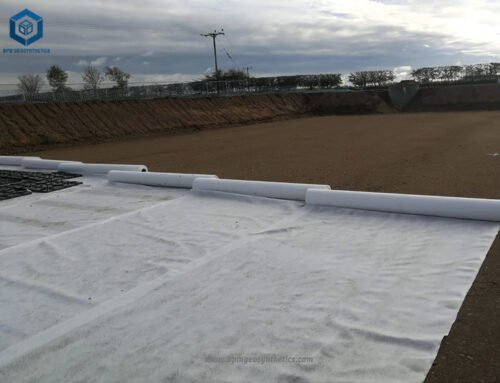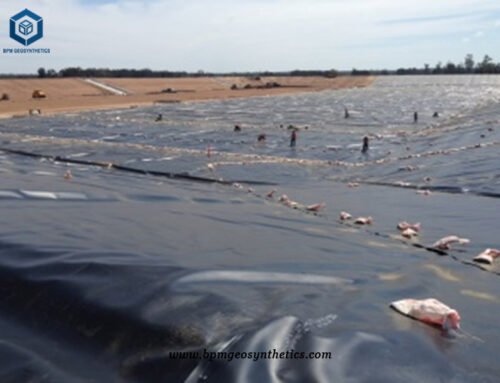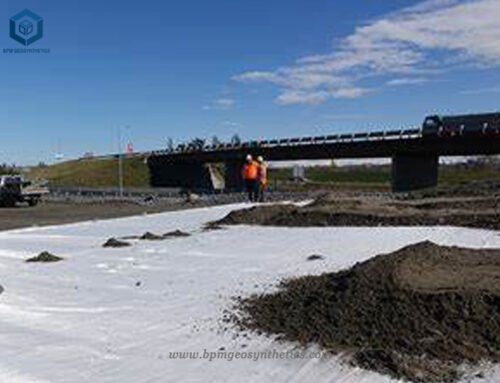HDPE geomembrane liners including 40 mil HDPE liner are versatile material that is used widely across many anti seepage lining applications including waste containment, water containment, aquaculture, energy, mining, industrial and civil engineering, etc.
1. What Is A 40 Mil HDPE Liner?
A 40 mil HDPE liner is a HDPE geomembrane made of High-Density Polyethylene (HDPE) with a thickness of 40 mils, equivalent to approximately 0.04 inches. These liners are commonly employed in containment applications such as landfill liners, pond liners, lagoon liners, and other environmental protection systems. Their 40 mil thickness provides a robust barrier against seepage, leakage, and contamination, making them highly suitable for various industrial, agricultural, and environmental applications.
BPM 40 Mil HDPE Liner, known for its durability, non-biodegradability, and waterproof properties, is available in different thicknesses and comes in 100-foot lengths. When installed underground and shielded from direct sunlight, this liner has an estimated lifespan of 70 years. It is resistant to mildew, rot, tearing, and puncturing. The liner can be installed vertically or horizontally and exhibits resistance to rodents, insects, and the effects of hot and cold climates.
The 40 mil HDPE liner offered by BPM provides a well-balanced combination of strength, impermeability, and cost-effectiveness. It finds applications in potable and reserve water storage, containment systems, agricultural ponds, and dairy ponds. This liner typically offers an average tensile strength of 15 kN/m (ASTM D6693), tear resistance of 133 N (ASTM 1004), and puncture resistance of 356 N (ASTM D4833).
2. How thick is a 40 Mil Liner?
“40 mil” refers to the thickness of the liner. A mil is a unit of measurement equal to one thousandth of an inch (0.001 inches). Therefore, a 40 mil HDPE liner has a thickness of 0.04 inches or 40 thousandths of an inch.
BPM 40 Mil HDPE Liner is a durable, non-biodegradable, and waterproof plastic liner that is commonly used for various applications such as lining ponds, reservoirs, landfills, and other containment systems. It is available in 100-foot lengths and can provide effective protection against leakage and seepage.
3. Case Study of 40 Mil Liner South Africa for Tailings Treatment Project
- Location : South Africa
- Product(s) : 40 mil HDPE liner
- Application : Tailings treatment Project
4. Why Chose 40 Mil HDPE Liner South Africa for Tailings Treatment Project
There are several reasons why choosing a 40 mil HDPE liner in South Africa for a tailings treatment project is advantageous:
1. Environmental Protection: Tailings, which are waste residues generated during the mining and sorting of ore, often contain metal elements that can be harmful to the environment and groundwater if discharged without proper treatment. A 40 mil HDPE liner acts as a reliable barrier, preventing the leaching of contaminants and protecting the surrounding environment.
2. Impermeability: HDPE liners, including the 40 mil variant, are known for their excellent impermeability. They create a secure containment system that prevents the migration of liquids and substances within the tailings, minimizing the risk of contamination.
3. Durability: HDPE liners are highly durable and resistant to punctures, tears, and chemical degradation. The 40 mil thickness provides added strength and stability, ensuring the liner can withstand the demanding conditions associated with tailings treatment projects.
4. Longevity: HDPE liners have a long lifespan, making them suitable for long-term tailings management. The 40 mil HDPE liner can offer extended service life, reducing the need for frequent replacements and contributing to cost-effectiveness in the long run.
5. Ease of Installation: HDPE liners are relatively easy to install, allowing for efficient and timely completion of tailings treatment projects. With proper installation techniques, the liner can provide a seamless and secure barrier system.
6. Availability: HDPE liners, including the 40 mil variant, are widely available in South Africa. This ensures easy access to the necessary materials for tailings treatment projects, reducing logistical challenges.
40 mil HDPE liner in South Africa for a tailings treatment project can benefit from its environmental protection capabilities, impermeability, durability, longevity, ease of installation, and availability. These factors contribute to the effective management of tailings and the safeguarding of the surrounding environment and water resources.
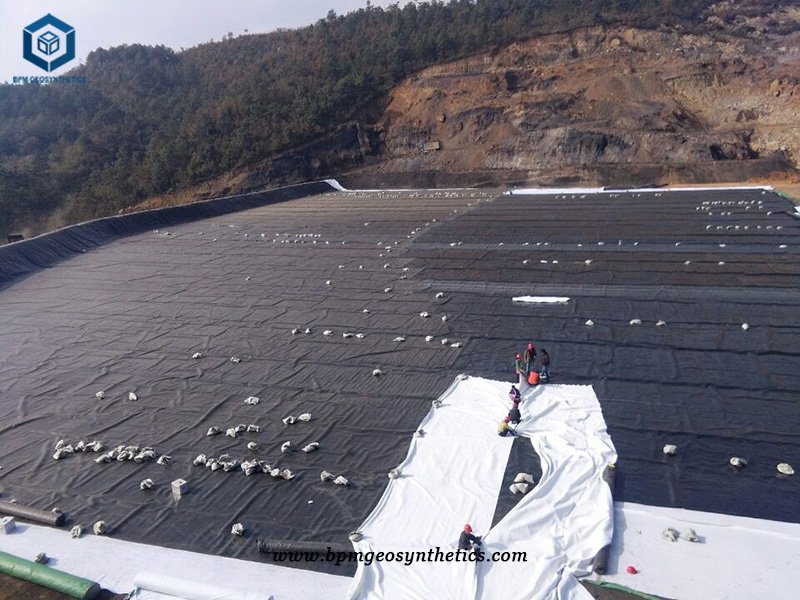
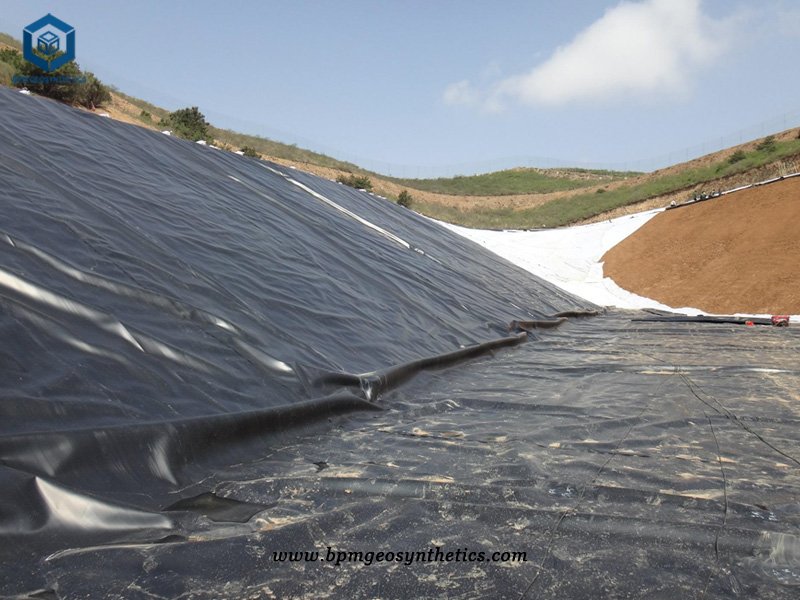
5. How To Use 40 Mil HDPE Liner for Tailings Treatment Project in South Africa?
40 mil HDPE liner has high tensile mechanical properties. Its excellent elasticity and deformability make it very suitable for expansion or contraction of the base surface. 40 mil HDPE liner can effectively overcome the uneven settlement of the base surface and has a high water vapor permeability coefficient. Impermeable membranes have excellent chemical stability and are used in sewage treatment, chemical reaction tanks, and landfills. The HDPE geomembrane liner has high and low temperature resistance, asphalt, oil and tar resistance, acid, alkali, salt and more than 80 kinds of strong acid and alkali chemical media corrosion. HDPE liner has anti-aging, anti-ultraviolet, anti-decomposition ability, can be used bare, the service life of the material is 50-70 years, and it provides a good material guarantee for the environment anti-seepage. A client from South Africa had a tailings treatment project. He found us through the company’s website. Based on our experience, we recommended 40 mil HDPE liner to customers and provided construction guidance to customers.
5.1 Site finishing of tailings pond
- The overall ground of the tailings pond should be flat and compacted, and there should be no right-angle broken surfaces or potholes, and no large stones, wine bottles, steel wire and other items to prevent piercing the geomembrane.
- Excavate a 50cm*50cm anchoring ditch at a place 1 meter away from the broken surface around the tailings dam to fix the geomembrane and prevent the anti-seepage geomembrane from slipping when the slope is too large.
5.2 HDPE Liner Installation
- Place the HDPE geomembrane liner on the top of the slope in advance, arrange them neatly, and roll it from the top of the slope to the bottom of the slope. This saves time and effort, saves labor, and makes the laying speed fast.
- In the process of laying impermeable geomembrane liner, do not artificially damage the geomembrane, flatten it without wrinkles, choose the laying direction correctly, reduce cutting and minimize the number of welding seams.
- If there is a T-shaped seam between two adjacent geomembranes, they should be welded in a staggered position. This will make the membrane stronger, leave an appropriate amount of deformation of the impermeable membrane to prevent thermal expansion and contraction of the membrane, and also prepare the foundation Uneven settlement occurred.
- Strive to lay and weld while laying. Do not lay too much to prevent the geomembrane from being blown by strong winds. If the laying and welding are fast and the welding is slow, it should be pressed in time with sandbags or waste tires.
5.3 Welding HDPE Geomembrane Liner
- Geomembrane welding has no special requirements for temperature. Generally, welding construction is not recommended under extreme cold conditions. Pay attention to the construction in windy weather, because the entire area of the impermeable membrane is large and it is easy to be disturbed by the wind.
- Before welding by double-bead hot-melt welding machine, the two anti-seepage HDPE liner should be overlapped by 10cm. During the welding process, adjust the direction of the welding machine at any time. Pay attention to the size of the overlapped surface to prevent slip welding and missing welding. Hold a towel in front of the welder and wipe the stains on the lap joints.
- Prepare a rope ladder on a construction site with a steep slope, and fix it on the slope to facilitate the construction personnel to go up and down. Do not rely on the power of the welding machine when encountering a right-angle slope during the welding process. It is easy to damage the welding machine. Up, that can protect the welding machine gears.
- Geomembrane welding has no special requirements for temperature. Generally, welding construction is not recommended under extreme cold conditions. Pay attention to the construction in windy weather, because the entire area of the impermeable membrane is large and it is easy to be disturbed by the wind.
- Before welding by double-bead hot-melt welding machine, the two anti-seepage HDPE liner should be overlapped by 10cm. During the welding process, adjust the direction of the welding machine at any time. Pay attention to the size of the overlapped surface to prevent slip welding and missing welding. Hold a towel in front of the welder and wipe the stains on the lap joints.
- Prepare a rope ladder on a construction site with a steep slope, and fix it on the slope to facilitate the construction personnel to go up and down. Do not rely on the power of the welding machine when encountering a right-angle slope during the welding process. It is easy to damage the welding machine. Up, that can protect the welding machine gears.
5.4 HDPE Liner Welding Precautions
- When welding, the corners and T-shaped seams are the focus of welding, and an extrusion welding gun can be used for secondary sealing.
- Geomembrane with a thickness of 1.5mm or more are not easy to turn at right angles or corners. You can use a hot-air torch to heat the corners, which is better.
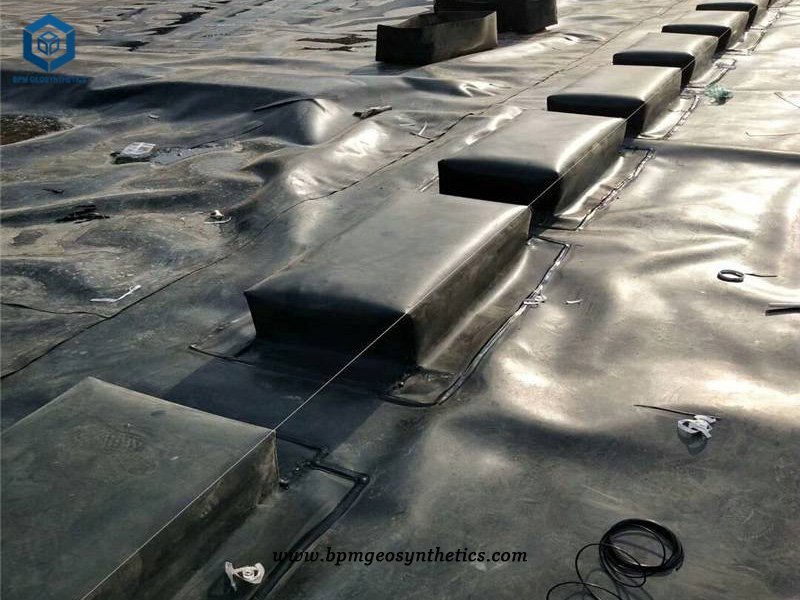
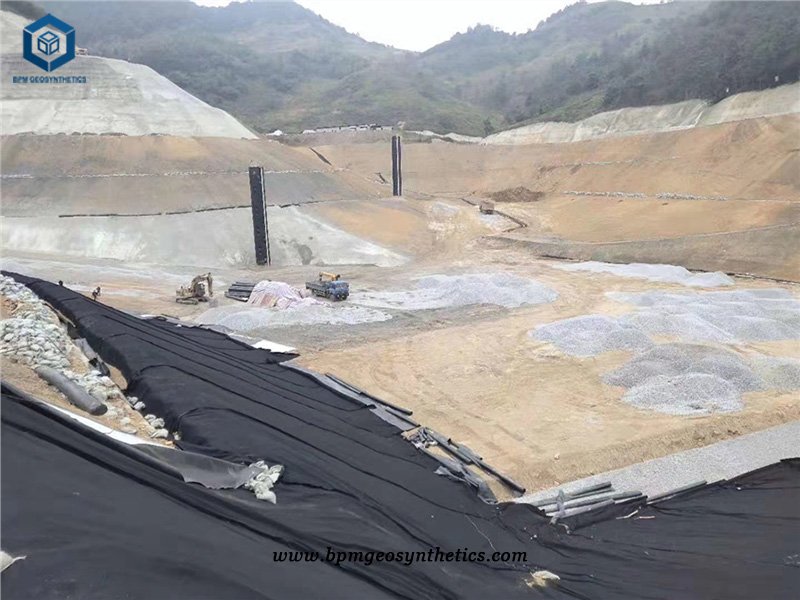
6. Summary
40 mil HDPE liner is a kind of waterproof barrier material based on high polymer polymer. HDPE geomembrane is made of high-quality virgin resin, the main component is 97.5% high density, about 2.5% carbon black, anti-aging agent, antioxidant, ultraviolet absorber, stabilizer and other auxiliary materials.
It has good resistance to environmental stress cracking and chemical corrosion resistance; good chemical corrosion resistance; has a large operating temperature range and a long service life, and is widely used in biogas digesters, tailings storage sites, and channel seepage prevention, Dam seepage prevention subway project, etc.
BPM has been specializing in delivering one stop geosynthetics products and solutions to worldwide customers since its foundation in 2007. BPM had provided many types of effective and state of the art geomembranes, geotextiles, geocells, geosynthetic clay liners (GCLs), drainage boards, geogrids to over 81 countries.
BPM is not only manufacturing best quality geosynthetic products but also providing professional design and installation service. OEM, ODM, custom development and fabrication are also available.
Any questions or inquiries, please contact us.


